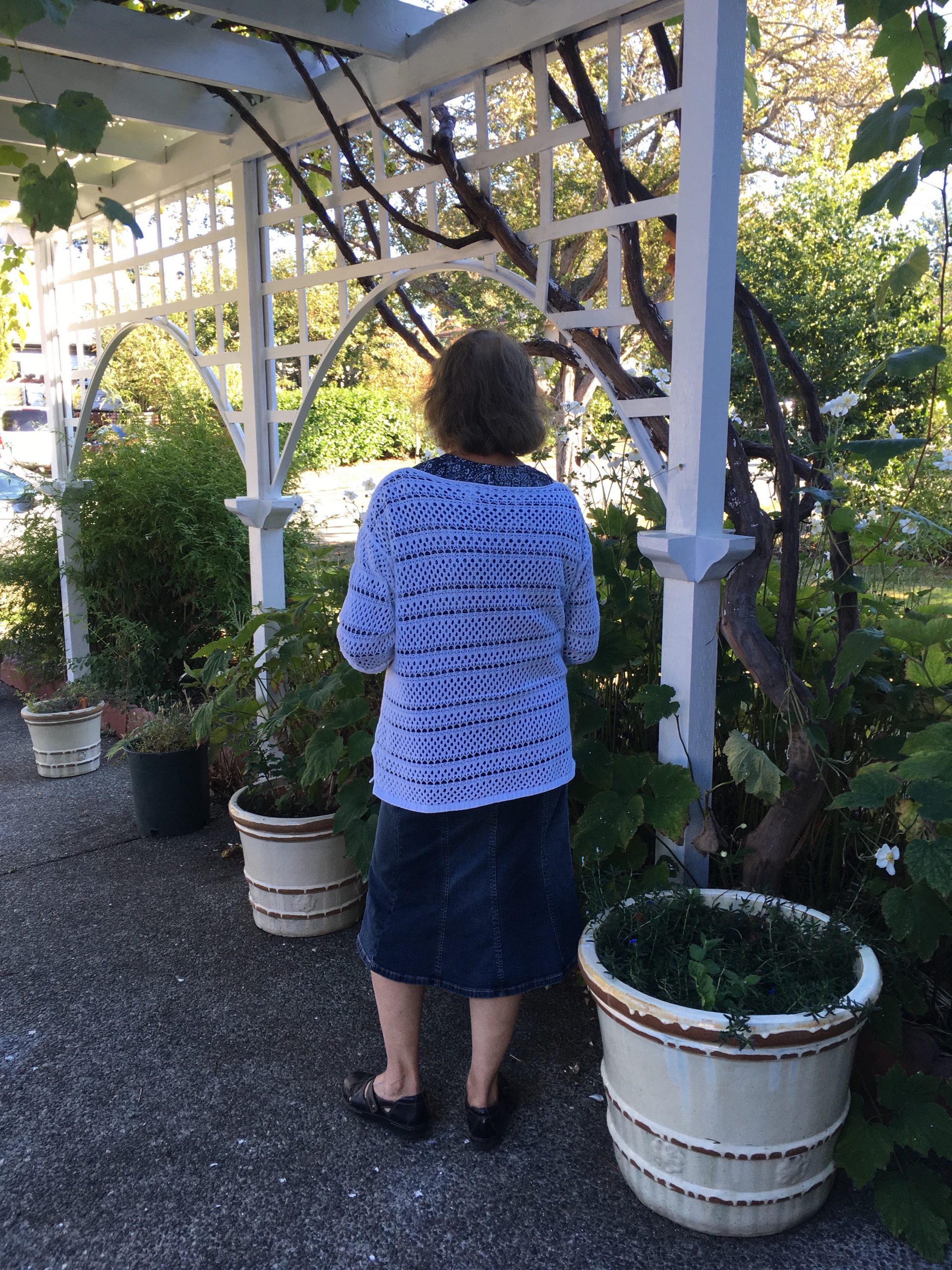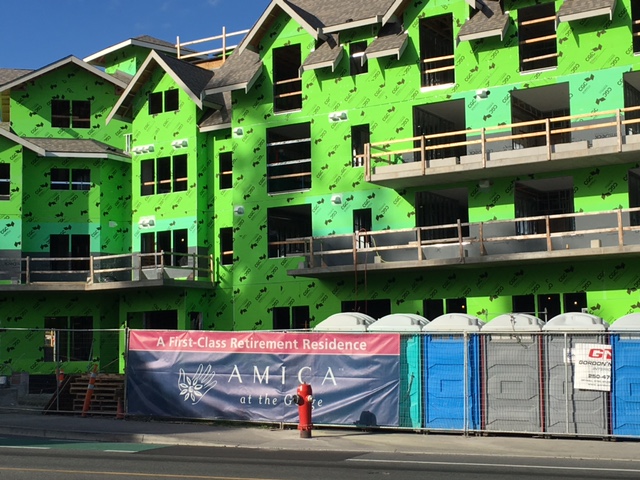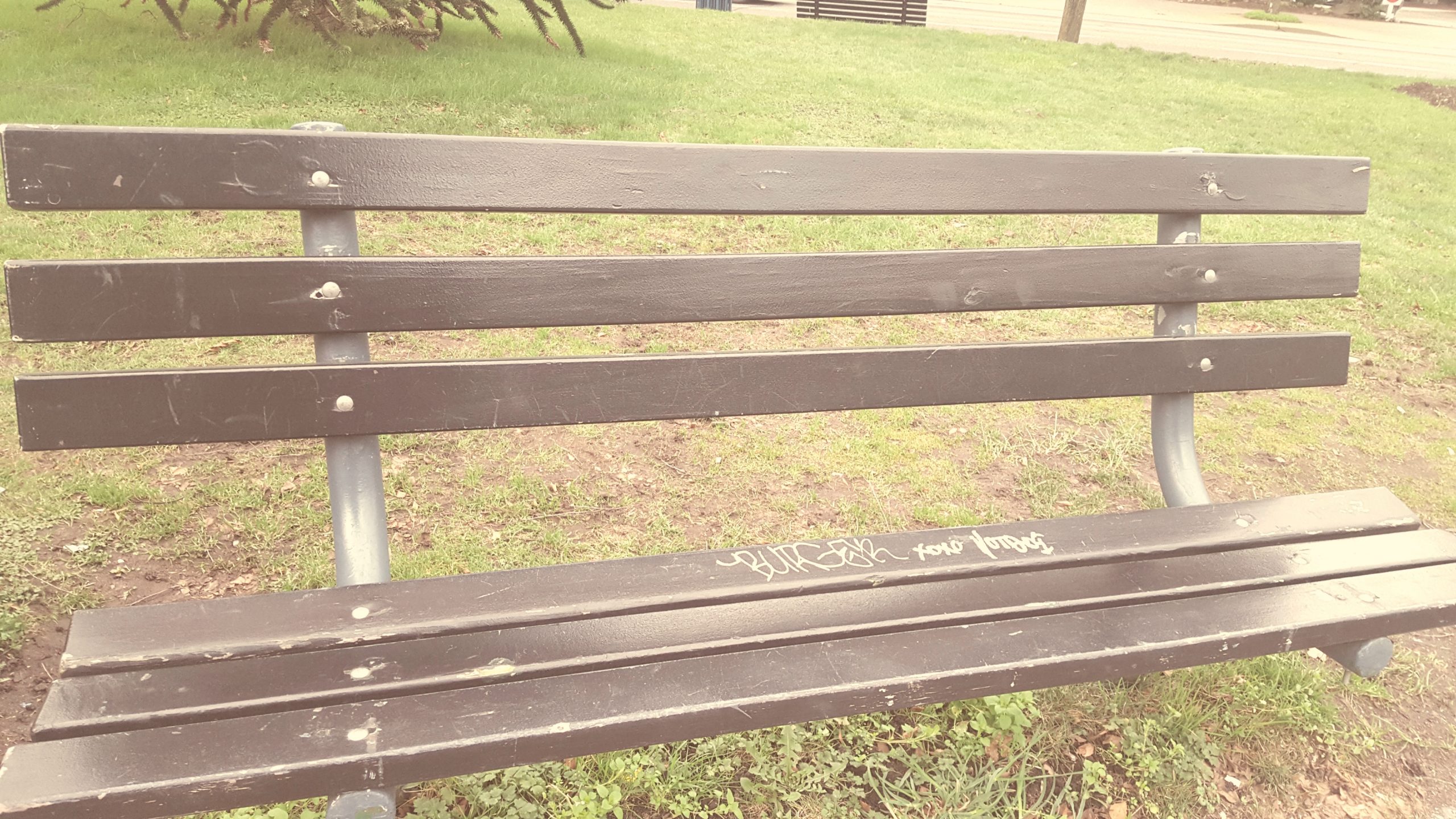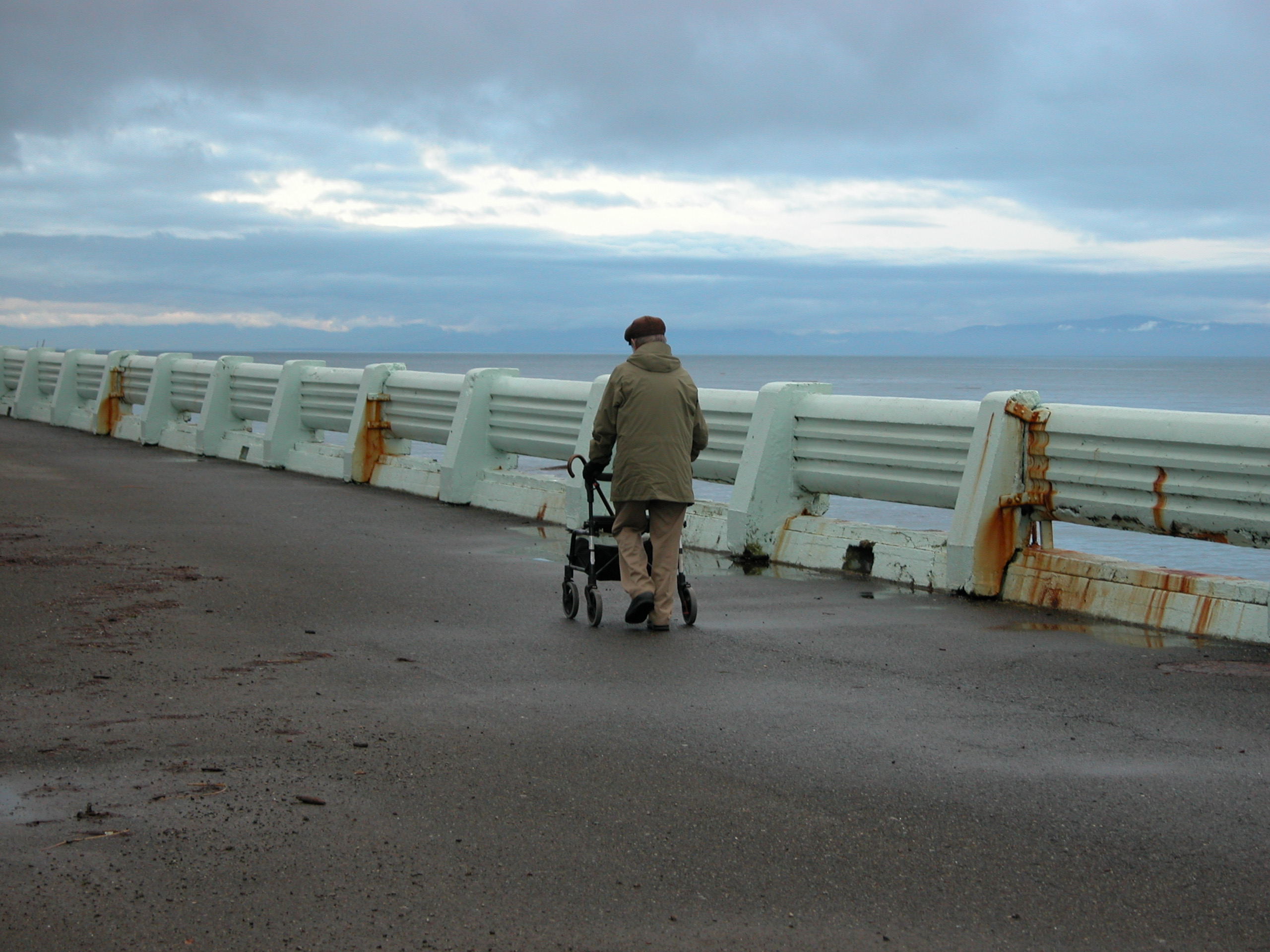Gender and class – bias and inequality
Introduction
The previous section, ‘Frailty and care’ discussed one of the most prominent stereotypical models of aging in North America: aging as frailty and decline. Using the three research questions presented to them as a guide, the discussion on this page (which includes participant photos, text and audio clips) addresses issues that overlap with two of the other stereotypical models of aging: ‘healthy or successful aging’and the ‘Boomer’s save the world superhero’ model. While both of these models provide positive ideals to strive for, they are not achievable for many older adults who lack financial security in older age, which is one of the determinants of health. Linked to these two models is another even more problematic image – the “Freedom 55” image of older age – usually represented by a heterosexual Caucasian couple living a carefree and financially secure life of perfect health and happiness in early retirement (see Model #3: Healthy or ‘successful aging’ in Stereotypical models of older age for details on “Freedom 55“).
As might be expected, the aging and anti-aging industries have had great success with their marketing strategies to these models of older age. But while this fantasy-like image may exist in reality for some individuals, it is not the norm. Combined with neoliberal policies that have decreased resources for the determinants of health necessary to make healthy aging possible for the majority of Canadians, the model of successful aging is too often unobtainable for many Canadians (Holstein & Minkler, 2003; Wallace, 2000). And according to the Canadian Centre for Policy Alternatives, inequality and inequity are very common among seniors, with single, divorced or widowed older women having the most financial insecurity (Townson, 2020). These issues of gender and class inequality were of great concern to a number of participants in both age groups.
Discussion by younger participants
The majority of the younger age group (4 out of 5) of participants discussed the connection between the portrayal of older adults in popular culture and the consumerism embedded in our society. Two of the participants commented on the inequality in contemporary society that is reinforced by popular culture and exploited by the aging and anti-aging industries. One of the female participants described how media and popular culture promote the myth of the American/Canadian dream about freedom and work, which she viewed as a “lie”: “if you work hard all your life you can retire at 65, or even earlier (‘Freedom 55’) if you’re lucky and live the life you have always dreamed of.” This same participant talked about the inequality that poverty and financial insecurity have created for many seniors, including members of her own family. One of the male participants noted the media and popular culture focus on youth and their connection to the ‘big business’ of the anti-aging industry that does whatever is necessary to successfully advertise and sell their products. Botox and anti-aging creams and vitamins are directed to the boomer generation, (but also strategically marketed to younger people in their 20s and 30s as a ‘preventative’ measure), while medications for dementia target the frail older adult by Big Pharma.
Two of this group of participants (1 male, 1 female) also discussed the well-established gender bias in popular culture. The male participant discussed the general lack of representation on screen of older women (See Stats: Gender bias and age discrimination in Hollywood and Stats: “Frail, frumpy and forgotten: A report on the movie roles of women of age”) Additionally, the female participant also noted that this gender/age bias is also reflected in the on-screen relationships of older men with much younger women, while you don’t typically see the reverse of older women with younger men. Both participants talked about the gendered (and ageist) bias in Hollywood where actors (most often female) are required to play characters that are 10-20 years older than the actor’s actual age (i.e. a female actor who is 45 plays a character who is 60), or they are cast in roles where in reality they are much younger than the male actor playing their son. This creates a situation where a true image of ‘old age’ is rarely seen (see Stats: Gender and age in Hollywood film for more detail). These same two participants also commented on the gender bias in relation to the anti-aging industry, whose ads on remaining youthful (or youthful looking) are directed to women. The selling points for these products are to help the consumer hold back a “loss of beauty” in order to retain a youthful appearance through creams and supplements, as well as surgical (cosmetic surgery) and non-surgical procedures (Botox). Men are not the market for these ads, although one male participant stated that single gay men have become another niche market for these products.
Discussion by older participants
“Across the life course individuals with higher incomes have better opportunities to enjoy safe housing, food security, as well having more control over their lives, consequently enabling them to manage stressful circumstances more successfully” (Public Health Agency of Canada, 2013).
A number of participants in the older age group raised the issue of the polarity in media and popular culture images of old age: 1) aging = mental and physical frailty, isolation and dependency (which includes the ‘warehousing’ of aging); or 2) aging = ‘Freedom 55’ ⎻ affluence, good health and freedom. Seven of the 11 participants (5 female, 2 male) also pointed out that we live in a neoliberal and/or consumerist society, one in which “the monetization of aging” is widespread. While the consumerist approach works reasonably well for the aging and anti-aging industries in their marketing strategies to the well-off boomer set, selling to the low-income and frail older adult has its limitations and is not very profitable.
For the Freedom 55 boomer the aging industry options include: luxury retirement homes, upscale senior condo and townhouse complexes, specialized travel, general consumer goods such as clothing and entertainment, plus a wide range of anti-aging products and services that include anti-aging vitamins and supplements, creams and lotions, along with a variety of cosmetic surgical and non-surgical procedures, such as Botox, chemical peels and dermabrasion.
Societal inequality and housing insecurity: Housing, including retirement homes, assisted living and long-term care facilities (LTC), were central topics of discussion among the majority (7 females, 2 males) of the older age group of participants. The trend of upscale retirement home living featured prominently in these discussions. For the Freedom 55 boomer, as well as the ‘frail older adult’ with some degree of financial security, the aging industry markets a lifestyle concept of expensive retirement home living, private LTC or assisted living facilities (referred to as warehousing by a number of participants). These seven participants commented on the way that popular culture highlights income inequality and warehousing of older people through senior’s magazines that target the affluent older adult. These magazines frequently feature ads that promote luxury retirement homes versus aging in place, with the cost of those retirement homes approximately $5,000-$7000 per month. Of course, for the low-income senior this type of housing is not conceivable. A number of the participants also pointed out the societal inequality embedded in retirement home housing.
One of the male participants stated that: “There is a popular perception that happiness equals comfort and retirement homes provide that comfort. Whether they provide that comfort is debatable and may depend on the luxury level of the retirement home, but ‘it’s retirement for the rich’ as most elderly people, especially women, could not afford to live there.” And aside from the considerable cost of living in one of these opulent residences, he went on to emphasize that while “there may be a certain level of comfort in these retirement homes, they are also homogeneous, thereby depriving people of engagement with mixed ages and types of people and dictating what kind of engagement they can have with other people.” According to one of the female participants, advertising for this type of housing promotes an ‘image’ of luxury, freedom, entertainment, and socialization. But in reality, the image of ‘luxury’ is usually concentrated in the foyer, while the individual rooms are often very small, the units have no kitchen, the facility food is quite often mediocre, and opportunities for social engagement are limited to special events and activities. More importantly, this participant went on to say that retirement homes of this type lack diversity and are heteronormative. Do they accept minorities, she wondered? And what about the LGBT community? Where do they go when they retire? But at the same time, this same participant said that she may have been influenced by ads reflecting a neoliberal ideology that promote private LTC as superior to public LTC facilities.
Two of the participants commenting on the housing topic had first-hand knowledge of LTC and assisted living as their careers had been in health care. One of these participants had a very critical perspective about the situation in LTC and assisted living facilities and the print ads that promote them. First of all, she felt that these ads try to persuade older people (and their families) that they should move into assisted living and LTC rather than remain in their own homes or live with their families. Secondly, her perception of these facilities was that they were not as the ads described them: happy, wonderful places filled with beauty and dignity, but rather the opposite. According to her, in reality these facilities are the last place people live before they die, filled with residents who are usually bored and isolated, not well cared for, and are also at the mercy of those who care for them. Finally, this participant suggested that media encourages the segregation and warehousing of older adults, supporting the neoliberal ideology of individual responsibility and private health care, which shifts responsibility for aging parents to private care facilities.





